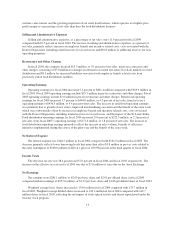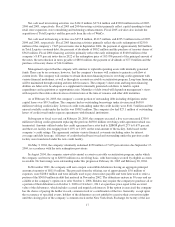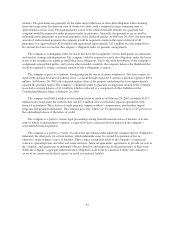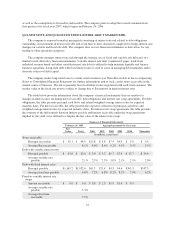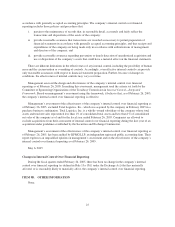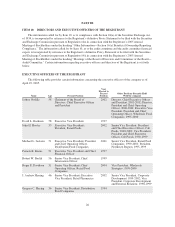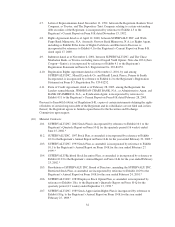Albertsons 2005 Annual Report Download - page 29
Download and view the complete annual report
Please find page 29 of the 2005 Albertsons annual report below. You can navigate through the pages in the report by either clicking on the pages listed below, or by using the keyword search tool below to find specific information within the annual report.Cautionary Statements for Purposes of the Safe Harbor Provisions of the Securities Litigation Reform Act
Any statements contained in this report regarding the outlook for our businesses and their respective
markets, such as projections of future performance, statements of our plans and objectives, forecasts of market
trends and other matters, are forward-looking statements based on our assumptions and beliefs. Such statements
may be identified by such words or phrases as “will likely result,” “are expected to,” “will continue,” “outlook,”
“will benefit,” “is anticipated,” “estimate,” “project,” “management believes” or similar expressions. These
forward-looking statements are subject to certain risks and uncertainties that could cause actual results to differ
materially from those discussed in such statements and no assurance can be given that the results in any forward-
looking statement will be achieved. For these statements, the company claims the protection of the safe harbor
for forward-looking statements contained in the Private Securities Litigation Reform Act of 1995. Any forward-
looking statement speaks only as of the date on which it is made, and we disclaim any obligation to subsequently
revise any forward-looking statement to reflect events or circumstances after such date or to reflect the
occurrence of anticipated or unanticipated events.
The following is a summary of certain factors, the results of which could cause our future results to differ
materially from those expressed or implied in any forward-looking statements contained in this report. These
factors are in addition to any other cautionary statements, written or oral, which may be made or referred to in
connection with any such forward-looking statement; however, they should not be construed as exhaustive.
‰Economic Conditions. The food industry is sensitive to a number of economic conditions such as:
(i) food price deflation or inflation, (ii) softness in local and national economies, (iii) increases in
commodity prices, (iv) the availability of favorable credit and trade terms, and (v) other economic
conditions that may affect consumer buying habits. Any one or more of these economic conditions can
affect our retail sales, the demand for products we distribute to our retailer customers, our operating
costs and other aspects of our businesses.
‰Competition. The industries in which we compete are extremely competitive. Both our retail food and food
distribution businesses are subject to competitive practices that may affect: (i) the prices at which we are
able to sell products at our retail locations, (ii) sales volume, (iii) the ability of our distribution customers to
sell products we supply, which may affect future orders, and (iv) our ability to attract and retain customers.
In addition, the nature and extent of consolidation in the retail food and food distribution industries could
affect our competitive position or that of our distribution customers in the markets we serve.
Our retail food business faces competition from other retail chains, supercenters, non-traditional
competitors and emerging alterative formats in the markets where we have retail operations. In our
food distributions business, our success depends in part on the ability of our independent retailer
customers to compete with these same formats, our ability to attract new customers, and our ability to
supply products in a cost effective manner. Declines in the level of retail sales activity of our
distribution customers due to competition; consolidations of retailers or competitors; increased self-
distribution by our customers; or the entry of new or non-traditional distribution systems into the
industry may adversely affect our revenues.
‰Security and Food Safety. Wartime activities, threats of terror, acts of terror or other criminal activity
directed at the grocery industry, the transportation industry, or computer or communications systems,
could increase security costs, adversely affect the company’s operations, or impact consumer behavior
and spending as well as customer orders. Other events that give rise to actual or potential food
contamination or food-born illness could have an adverse effect on the company’s operating results.
‰Labor Relations and Employee Benefit Costs. Potential work disruptions from labor disputes may
affect sales at our stores as well as our ability to distribute products. We contribute to various multi-
employer healthcare and pension plans covering certain union represented employees in both our retail
and distribution operations. Approximately one-third of the employees in our total workforce are
participants in multi-employer plans. The costs of providing benefits through such plans have escalated
rapidly in recent years. Based upon information available to us, we believe certain of these multi-
employer plans are underfunded. The decline in the value of assets supporting these plans, in addition
23


